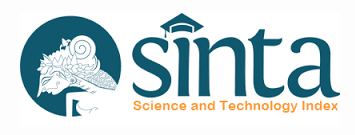EDITORIAL BEHAVIOR SEMIOTICS ANALYSIS IN TRIBUN BONE NEWS
Abstrak
The presence of an editorial text can be interpreted as an important thing because it gives its characteristics as well as its impression. Moving on from the explanation above, the media usually uses editorial as a propaganda material or tool which is usually aimed at certain groups or circles, to influence attitudes and behavior related to certain issues as well. Editorial policy refers to a certain segmentation of readers and the basic attitude of newspapers to determine the next step. In the scope of journalism, text editor is very important, especially in print media. Therefore, it is not just anyone who is assigned to write for the editorial. This research is qualitative research. Qualitative research aims to explain a phenomenon or object of research more broadly and completely through in-depth data collection. According to Mantra, the qualitative method is a research procedure that produces descriptive data in the form of words or words from people and observable behavior. This study uses a methodological library approach and scientifically uses a Communication Science approach. To analyze the behavior of editors in Tribun Bone news, the author uses the Roland Barthes model. The results of this research show that editorial behavior in the news reviewed in the Tribun Kota rubric in Media Tribune Bone displays media ideology that displays the sides of humanity (humanism), counter to crime and criminal behavior, morality, and gender issues.
Referensi
AFTAR PUSTAKA
Arifin, A. (2003). Komunikasi Poitik: Paradigma Teori Aplikasi Strategi dan Komunikasi Politik Indonesia. Jakarta: PT. Balai Pustaka.
Aziz, M.A. (2004). Ilmu Dakwah. Jakarta: Kencana.
Bustaman. (1994). Dimensi Spritualitas dalam teori psikologi, Jurnal Ulumul Qur'an, Volume V (Nomor 4): 16.
Cangara, H. (2010). Pengantar Ilmu Komunikasi. Jakarta: Rajawali Pers.
Enjang, A.S. (2009). Komunikasi Konseling. Bandung: Nuansa.
Farid, M. (2001). Refleksi Islam. Bandung; Pusdi Press.
https://puncakhati.blogspot.com/2016/01/hedonisme.html
https://www.popmama.com/life/health/bella-lesmana/cara-menghindari-gaya-hidup-hedonisme
Kementerian Agama RI. (2012). Al-Qur'an dan Terjemahnya. Bandung: Syamil Qur'an.
Kementrian Agama RI. (2010). Al-Qur’an dan Tafsirnya. Jilid I. Jakarta: Lentera Abadi.
Mahmuddin. (2004). Manajemen Dakwah Rasulullah. Jakarta: Restu Illahi.
Nisak, K. (2014). Perbedaan Gaya Hidup Hedonis Mahasiswa yang Tinggal di Kos dan Tinggal di Rumah Orangtua, Skripsi. Fakultas Psikologi UIN Sultan Syarif Kasim Pekanbaru Riau.
Ruslani. (2000). Wacana spritualitas Timur dan Barat. Yogyakarta: Qalam.
Sugiyono. (2014). Metode Penelitian Pendidikan Pendekatan Kuantitatif, Kualitatif, dan R&D. Bandung: Alfabeta.
Sulthon, M. (2003). Desain Ilmu Dakwah. Semarang: Pustaka Pelajar kerjasama dengan Walisonggo Press.
Syukur, A. (2012). Sufi Healing. Jawa Timur: Erlangga.
Veenhoven, R. (2003). Hedonism and Happiness. Netherlands: Journal of Happiness Studies 4: 437–457, Kluwer Academic Publishers.
Zed, M. (2004). Metode Penelitian Kepustakaan. Jakarta: Yayasan Obor Indonesia.
Once an article was published in the journal, the author(s) are:
granted to the journal right licensed under Creative Commons License Attribution that allows others to share the work with an acknowledgment of the work's authorship. permitted to publish their work online in third parties as it can lead to wider dissemination of the work. continue to be the copyright owner and allow the journal to publish the article with the CC BY license receiving a DOI (Digital Object Identifier) of the work.





